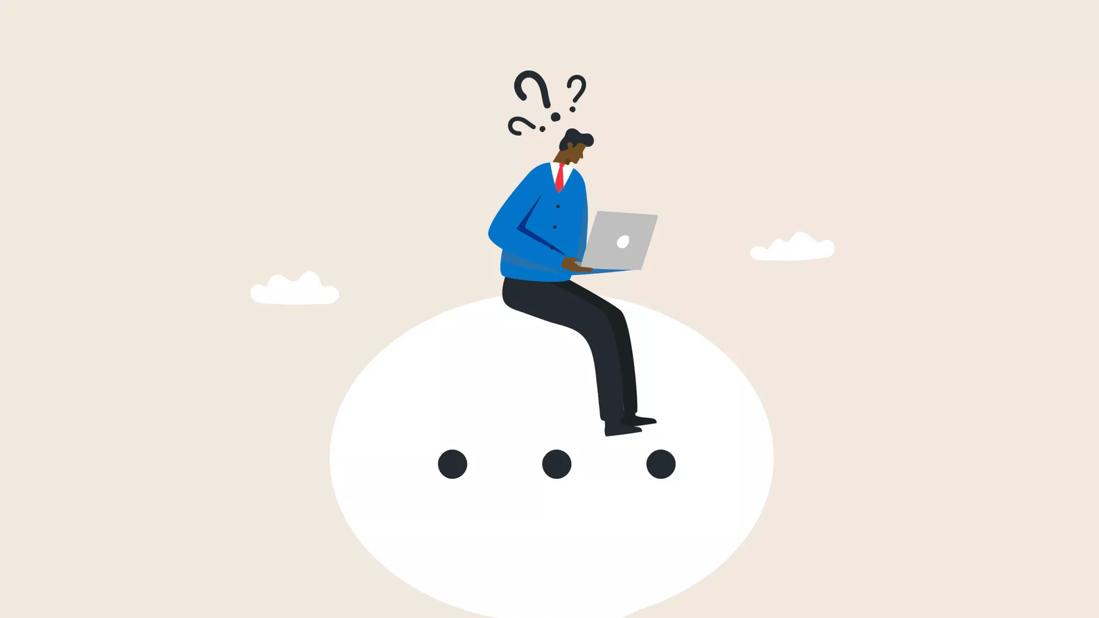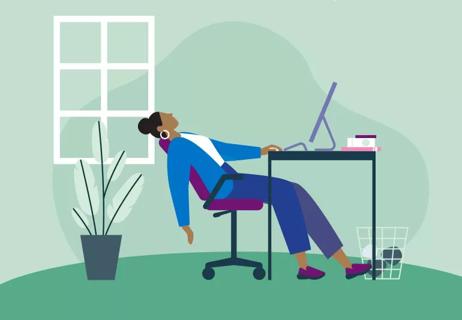Paper or plastic? Tea or coffee? Debit or credit? Boxers or briefs?
Advertisement
Cleveland Clinic is a non-profit academic medical center. Advertising on our site helps support our mission. We do not endorse non-Cleveland Clinic products or services. Policy
We make hundreds — maybe even thousands — of decisions every day. But they aren’t all that straightforward.
Which candidate should we hire? Should we renew our lease, even though we’ve been having relationship problems? Should we keep the patient overnight for observation, or send them home?
Sometimes, the volume, complexity or potential impact of the decisions you have to make in a day can leave you so physically, mentally and emotionally drained that “fries or a salad?” feels like a riddle.
We’re doing a deep dive into decision fatigue: What it is, what it isn’t, how to spot it and how to prevent it.
What is decision fatigue?
According to registered psychotherapist Natacha Duke, MA, RP, decision fatigue is a phenomenon (as opposed to a diagnosable medical condition) where the more decisions a person makes over the course of a day, the more physically, mentally and emotionally depleted they become. A person experiencing decision fatigue struggles with executive functioning. This can have a wide range of consequences, including impaired judgment.
Why does decision fatigue happen?
Anyone can experience decision fatigue, but it’s most likely to occur when:
- You make a lot of decisions every day. Judges, surgeons and quarterbacks are extreme examples, but many of us have jobs or play roles that require numerous quick decisions every day.
- Your decisions impact other people. The “other people” in question could be your partner, your children, your employees … the list goes on. Depending on your job, it may even be people you don’t know!
- You’re in the midst of a difficult life situation. Picking out flowers isn’t usually difficult, but if you’re planning a memorial service for a loved one, it can seem impossible.
- You’re faced with uncertainty. Duke notes that many people struggled with decision fatigue during the early days of the COVID-19 pandemic because we didn’t have much information about the virus, and couldn’t know for sure what consequences our choices would have.
- You have perfectionist tendencies. “When our standard is perfection for everything, and we’re really thinking through everything to the nth degree, that’s exhausting and depleting for our brain,” Duke notes.
Chances are, you fall into at least one of those categories (if not more) on a regular basis. So how can you tell when day-to-day frustrations have spilled over into decision fatigue?
Signs and symptoms of decision fatigue
We’ve compiled eight common symptoms of decision fatigue for your reference.
Remember: Decision fatigue is an acute (short-lived) experience. If you’re experiencing these symptoms every day, then something else more chronic may be going on.
- Procrastination or decision avoidance. If you forget the vet appointment, you won’t have to decide whether to move forward with that expensive surgery … right? Putting decisions off — or avoiding certain people or situations altogether — is one of the most common responses to decision fatigue. You might be procrastinating without even realizing it!
- Impulsivity. If you’ve been making complex decisions all day, you could find yourself being less careful about other choices you have to make: Stopping at the drive-thru you usually drive by. Spending way too much money shopping online. Overlooking an obvious cognitive bias. Calling that ex when you absolutely know better. Impulsivity can take a wide range of forms — and have a wide range of consequences.
- Exhaustion. Decision fatigue can be physically, mentally and emotionally taxing. So, it wouldn’t be surprising for a person with decision fatigue to be desperate for a nap or a good cry.
- Brain fog. Are you suddenly having trouble finishing your … sentences? Has your train of thought left the station? Do you keep forgetting names or get distracted when people are trying to talk to you? Decision fatigue might be causing your brain fog.
- Irritability. Did you just bite your best friend’s head off for asking where you want to go for lunch tomorrow? Yeah, you might have decision fatigue.
- Overwhelmed. Are you starting to feel like there’s no room left in your head — much less your schedule — for everything you’re juggling? Getting overwhelmed is an issue in and of itself, but it can also signal decision fatigue.
- Regret or dissatisfaction. If you made the choice, but you’re still ruminating about it hours later and questioning the call you made, it could be the result of decision fatigue.
- Physical discomfort. The stress of making a difficult decision can cause a wide range of physical symptoms, from tension headaches and eye twitching to nausea and other tummy troubles.
What decision fatigue isn’t: Chronic
Decision fatigue isn’t a problem that you should be facing day in and day out. “It’s usually an acute thing because most of the time when you’re suffering from true decision fatigue, you’ll have a recovery that’s reasonably quick,” notes Duke. “You’ll probably feel better after a day or so and be able to get back to your regular level of functioning.”
If you feel like you’re experiencing the symptoms of decision fatigue on the daily, it’s probably a good idea to let a healthcare provider or therapist know.
“I think what happens sometimes is that someone might be suffering from indecisiveness as a result of anxiety, depression or PTSD, something else that’s going on in terms of their mental health,” Duke explains.
“Indecisiveness can also be a symptom of burnout. If it’s something that’s happening chronically, it would be important to look into what’s really going on. Is it decision fatigue or is it a bigger issue?”
How to prevent decision fatigue
Everyone experiences decision fatigue from time to time. And that’s OK. While we can’t always control the situations that cause our decision fatigue, we can build protective measures into our daily lives to make that fatigue less likely and more manageable.
- Remove choice from some elements of your life. Steve Jobs, Barack Obama and several other famous decision-makers have talked publicly about how they wear essentially the same thing every day. Their rationale: Not having to think about what you wear is one fewer decision to make. Whether it’s what you wear, which podcast you listen to on the way to work or what brand of oatmeal you’re buying at the store, as Duke puts it: “Some things can be automated. Give yourself the ability to not have to have perfection be the standard for everything in your life.”
- Delegate (if possible). Some decisions are always going to be yours to make. But sometimes — and we’re talking to you, perfectionists — it’s OK to let other people handle things. They may (gasp) make a mistake every once in a while, but so will you! Go ahead: Let the assistant coach decide the starting lineup. Let your spouse-to-be choose the caterer for the big day. It’s going to be OK.
- Prioritize sleep. What do people say when faced with tough choices? “I’ll sleep on it.” There’s a reason for that. Research shows that we take more time to deliberate — and make better decisions — early in the day. It also shows that not only do sleep-deprived people have poor impulse control and emotional regulation skills, but their morality also takes a hit. If you find yourself in a particularly decision-heavy phase of your life, making the extra effort to get a good night’s sleep may help protect against decision fatigue.
- Exercise. You’ve probably heard that exercise is good for your brain, especially as you get older. But did you know that it can also help you make better decisions? A study in the British Journal of Sports Medicinefound that coupling 30 minutes of moderate-intensity exercise with a three-minute walking break every half hour can improve executive function. If that sounds like a lot to you, don’t worry: Any exercise is better than no exercise, and walking for any length of time can do wonders for your overall mental health.
- Manage stress. Making stress-management activities part of your daily routine can help you feel less overwhelmed and more confident in the face of difficult decisions.
- Make time for self-care. Caring about your own mental health and well-being isn’t selfish. You can’t do what it takes to help others if you aren’t caring for yourself. Having a self-care routine in place can prevent decision fatigue — and make handling it easier if it does happen.
- Build downtime into your day. Life can get so busy, we sometimes forget to give our brains a chance to go offline for a while. “It’s a bit of a cliche, but I think it is true,” Duke reflects, “That you need to have some downtime where you don’t have to make decisions, think about things or analyze anything.” Scheduling downtime — whether that means watching reality TV on your phone over your lunch break, meditating for 20 minutes every day or taking the long route when you walk your dog after dinner — can help keep your brain charged and ready to make tough choices.
When to get help
We asked Duke what someone who’s up at 3 a.m. Googling “decision fatigue” should be doing to get to a better place. Her answer was telling: “They should be sleeping.”
Hard as it can be to experience decision fatigue, tomorrow is another day and — if you’re truly dealing with decision fatigue — that makes a big difference. If you don’t feel better after giving your body and mind an opportunity to “restore to factory settings,” then it’s probably time to talk to a healthcare professional.
“I always say that if you find yourself wondering if you should consult a therapist, then you probably should,” Duke says.
“It might be a one-off session where you get some tips to cope with decision fatigue when you feel it creeping up, or it might open up a window, to help you consider what else might be happening. Have you been ignoring other signs and symptoms that you’ve been experiencing, or maybe not realized that something else might be going on?
“It’s always better, in my opinion, to err on the side of caution and check it out.”











